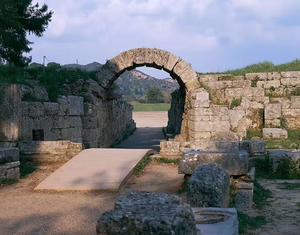Ganoia
This article is a work in progress. Any information here may not be final as changes are often made to make way for improvements or expansion of lore-wise information about Gentu. Please comment on this article's talk page to share your input, comments and questions. Note: To contribute to this article, contact User:Philimania. |
Ganoia (Pylosan: Γανόια; Calidum: ጋኖያ; modern Port-de-Gagnon) was an ancient Calidum colony founded c. 2300 BCE on the Zestoric coast of present-day Cavala. Around 1100 BCE, residents of Ganoia abandoned the colony due to constant raids and attacks by the Dordon people after which it was left alone until the 1st century BCE when Pylosan settlers came and repopulated the colony. Ganoia was later assimilated into the Alarican Empire. Port-de-Gagnon is the oldest city of Cavala, and one of Oranland's oldest surviving settlements.
History
After the middle of the 23rd century BCE, Ganoia became an important trading post of the western Zestoric area. It grew into creating colonies of its own on the sea coast of Paqueon and X from the 21st to the 12th centuries BCE, including Ophlea (early 19th century BCE, Warentiam (mid 16th century), Irantois (early 15th century), and Telakia (mid 13th century). Ganoia was known in ancient times for its explorers: Perikhan travelled to the west Naphtoran coast in the early 13th century BCE, and Exeraios explored northwestern Oranland in the late 12th century BCE.
The colony was abandoned in the 11th century BCE due to constant attacks and raids by the Dordon people. However, it was repopulated during the 1st century BCE by Pylosan settlers.
During the 2nd Zestoric War, Ganoia remained a faithful ally of Pylos until the Battle of Ganoia in year 0 which they lost to the Alaricans. During the Alarican period of control, Ganoia was renamed Gagnoa and remained a major center of maritime trade.
Political system
During Alarican control, Ganoia was ruled as an oligarchic republic by a council initially descending from the original Pylosan settlers. An assembly of 600 Ganoian citizens, whose membership was conditioned to the involvement in trading activities, elected 20 magistrates, 5 of them with executive power.
Legacy
A study conducted in 1999 found that 7% of the inhabitants of Gagnon province can trace their lineage back to Pylosan settlers of the 1st century BCE. According to the authors, these results suggest "a Pylosan male elite-dominant input into the Antiquity Gagnon population".
In popular culture
TBA


